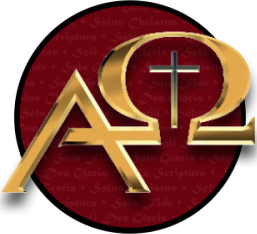Textual scholars are unanimous in their agreement that textual criticism applied to the extant manuscripts is necessary if the original readings of the New Testament are ever to be fully recovered. Those who hold to the view that only the King James Version of the Bible is the normative text of the church cannot be considered among rational, textual scholars. This position posits a 17th century English version as the only infallible Word of God, and is, therefore, based more on tradition, misinformation, and conspiracy than on real scholarly textual research.
Precisely how textual criticism should be applied, particularly with regard to the types of evidence discussed previously, and which manuscripts should form the basis of the reconstructed New Testament are hotly disputed issues. There are two broad categories into which the diverging views can be placed: the “Traditional Text” views, and the “Eclectic” views. Within the Traditional Text views, there are those who hold to a Majority Text position, those who hold to the Textus Receptus, those who hold to an Ecclesiastical Text, and those who hold to Byzantine Priority. All of these essentially look to the manuscripts of the Byzantine family as the basis for the New Testament text. Their differences lie both in how they arrive at their final text, and in the reasoning behind their choice of this particular family. Within the Eclectic views, one finds those who are Thoroughgoing, and those who are Reasoned. The difference between them is in the degree to which the principles of Eclecticism are applied.
Traditional Text Positions
There are a variety of positions with regard to the Greek text behind the New Testament that can be identified by their common allegiance to the Byzantine text type. Of these positions, there are four that should be mentioned: the Textus Receptus position, the Majority Text position, the Ecclesiastical Text position, and the Byzantine-Priority position. In this article we shall examine the first two of these, leaving the others to subsequent articles.
Textus Receptus
Since the term Textus Receptus has been applied to a variety of Greek New Testament texts over the years, it could be legitimately asked, “which Textus Receptus?” For those who hold this position, the text in mind is the text of Erasmus and the Elzevirs–the text that was eventually used by the King James Bible translators. While it is of the Byzantine text family, this edition of the Textus Receptus is not representative of the entire Byzantine text type. Indeed, many advocates for other Traditional Text views distance themselves from the Textus Receptus due to its many variations from the majority of other Byzantine texts. Given that it includes Erasmus’ translation of the last six verses of Revelation from Latin into Greek, and for the rest is based on a relatively small collection of manuscripts, there are some quite unique readings in the Textus Receptus that are not found elsewhere, even among other Byzantine manuscripts.
It appears that the main motivation behind promoting the Textus Receptus as the true Greek text behind the New Testament is theological. Often its supporters refer to it as the text of the Reformation, as if the integrity of the text is reliant upon the supposed use of the text by those great men of God who led the Protestant Reformation. However, Dr. James White in his book The King James Only Controversy clearly demonstrates that there is insufficient evidence that the Reformers specifically promoted the use of the Textus Receptus over and above other streams from the Byzantine family (see page 69). Hence, while this is an interesting position, it is not one that is widely held, especially among the majority of textual scholars.
Majority Text
As the name suggests, the basis of the Majority Text position is that the key factor for determining the original text of the New Testament should be quantity of manuscripts. Since the Byzantine text type is by far the majority report, and has been since the ninth century, it comes as no surprise that the Majority Text is a Byzantine family text.
While Dean Burgon could not strictly be classified as a Majority Text advocate, he clearly utilized similar argumentation when defending the Byzantine text against the Westcott and Hort text. He expressed amazement that out of 1,000 Greek manuscripts 995 copies of the New Testament that have been around for centuries would be considered untrustworthy, and the reliability of the text would be carried by a handful of manuscripts that were unknown to the church until relatively recently. Would the truth of the text of Scripture reside with a vast multitude of manuscripts that have a remarkable level of agreement, or with a handful of manuscripts that cannot agree with one another most of the time? Burgon was also very skeptical of the popular text critical principle that witnesses should be weighed not counted. He wondered if it is possible to weigh every codex, version, or church Father, or whether every critic is competent to perform such a task. Burgon insisted that number is a vital criterion for determining the originality of a reading. If number would make a difference in a jury vote, he argues, why not when determining the original text of the New Testament, especially when the manuscripts in question cover a broad range of geographical regions.
Modern advocates of the Majority Text position also use stemmatics, or a genealogical method of tracing a reading’s textual history, to determine the antiquity of a particular text. Zane Hodges, the main proponent of this method, describes it as a method whereby “a valid stemma [has] the power to explain the descent of the readings in a natural way” (Zane Hodges and Arthur Farstad, The Greek New Testament According to the Majority Text, p. xxv, quoted in Daniel Wallace, “Some Second Thoughts on the Majority Text,” available on-line at http://www.bible.org/docs/soapbox/89c3.htm). The higher up the stemma a reading appears, the more likely it is to be original. Also, each stemma should be demonstrably the father of multiple readings, which appear only below the stemma.
Finally, proponents of the Majority Text position are apt to view their particular line of textual transmission as the only pure and, therefore, correct line. All other lines are considered unorthodox or heretical. Arguments based on a doctrine of divine preservation are often articulated to defend the idea that God has preserved this particular stream of the text, and this is evidenced by the vast quantity that still exists to this day. See, for example, the comments by Wilbur Pickering in his book, The Identity of the New Testament Text, as quoted by Daniel Wallace, “The Majority Text and the Original Text: Are They Identical?” Bibliotheca Sacra 148 (April 1991): 152-158. This paper is also available online at http://www.bible.org/docs/soapbox/91B2.htm.
Part 9: “Traditional Text” Positions: The Ecclesiastical Text–coming soon…



